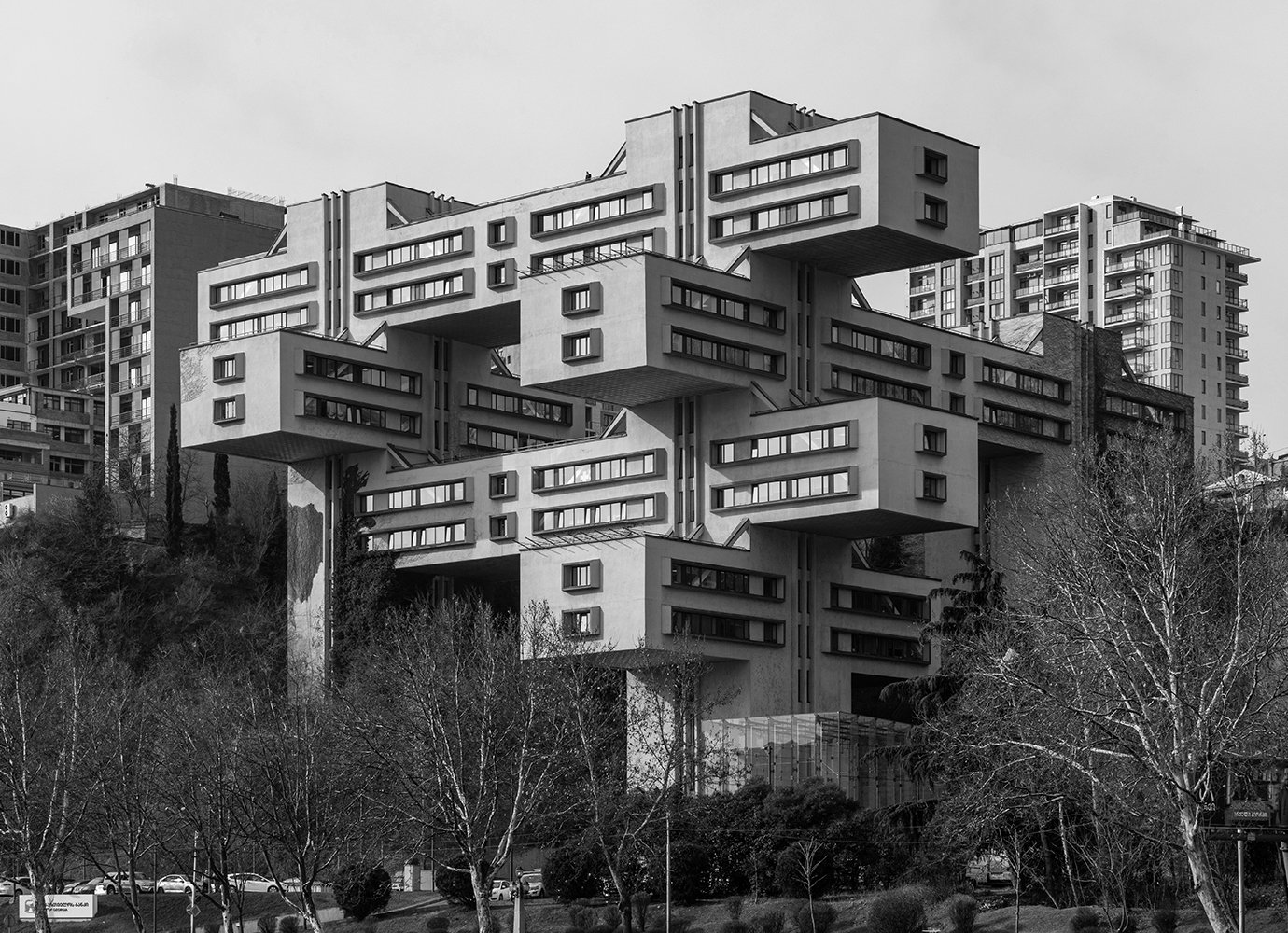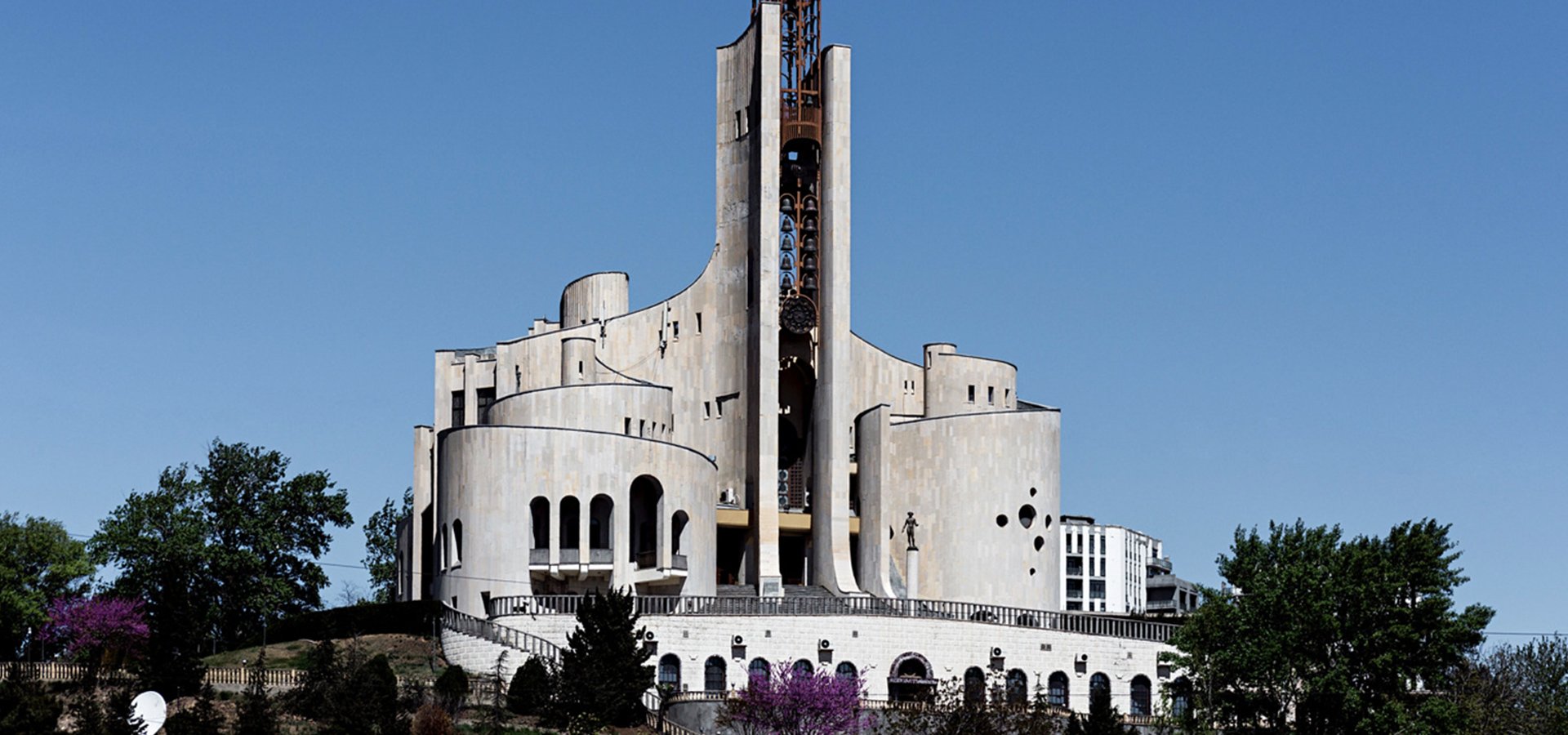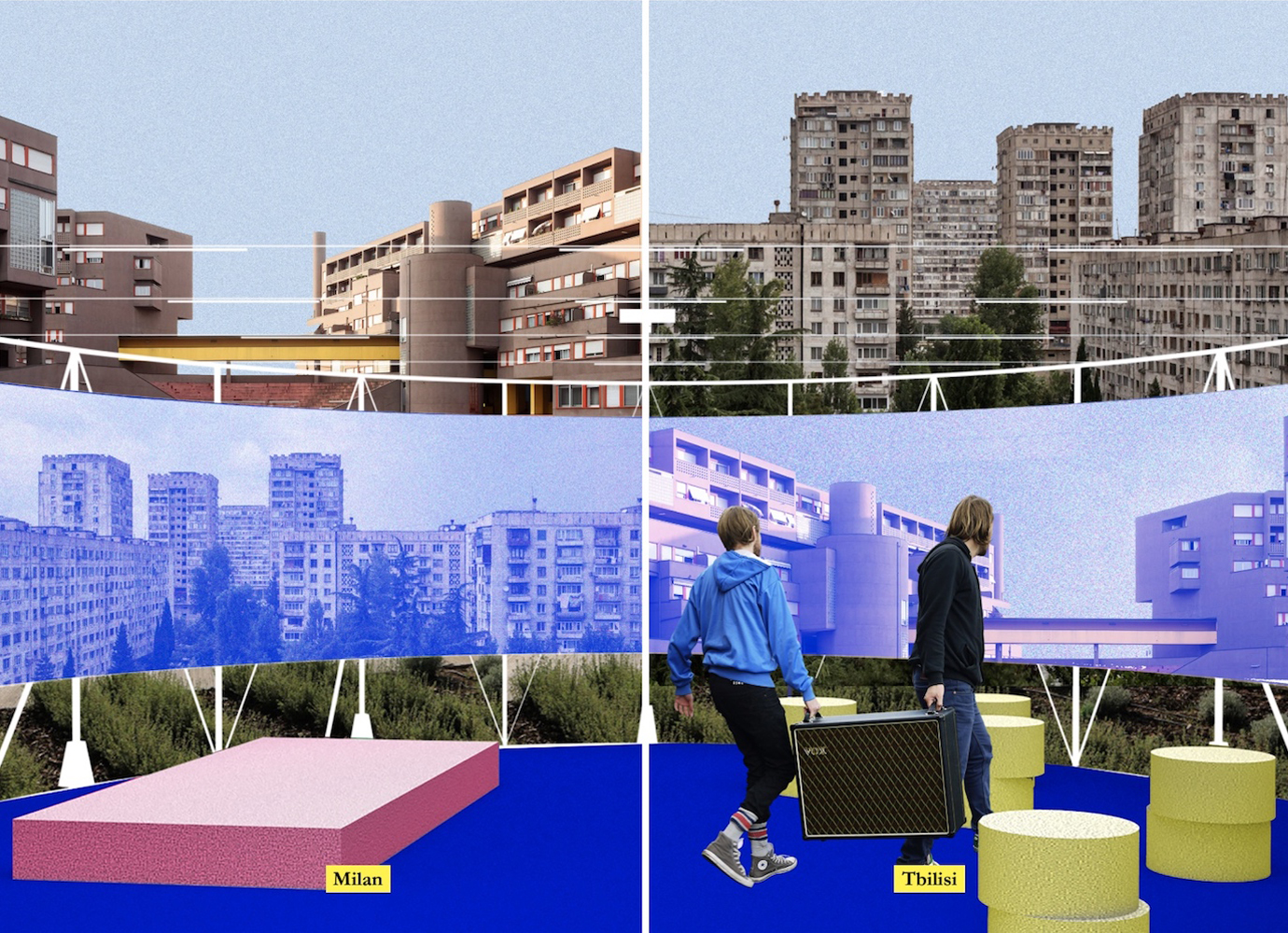On the map: 6 modernist architectural monuments of 20th century Tbilisi

A new architectural map of Tbilisi celebrates the Georgian capital’s iconic 20th century buildings.
Published by Blue Crow Media as part of their 20th century architecture series, the Tbilisi Architecture Map guides would-be tourists through both staple landmarks and overlooked monuments, brought to life thanks to original photographs by Stefano Perego.
“The momentous history of 20th century Georgia is reflected in the incredible diversity of Tbilisi’s architecture,” says the map’s curator, architectural historian, and radio presenter Ana Chorgolashvili. “After the popular introduction of Modernism, alongside examples of Neo-Gothic and Neo-Romantic architecture at the beginning of the century, radical change arrived with the Bolsheviks and the growth of the Soviet Union. Although Tbilisi’s architecture would echo that of the Soviet Union until its collapse, compellingly original architecture still emerged.”
Here are six of the map’s top highlights.
Institute of Physiology
An example of late Soviet architecture, the Institute of Physiology was built in 1986 by architects V. Gelashvili, T. Todradze, D. Kostov, D. Tevdoradze, and O. Phanozashvili.
Built from several blocks of different heights, this white-and-pink building emanates power. Once futuristic, the Institute of Physiology now appears slightly decayed, due to negligence and lack of repairs.
“Thanks to the vertically-ascended weights and the reserved energy of the itinerant stair expansion, this seemingly heavy construction appears rather vibrant and alive,” says Chorgolashvili. “Such an elegant practice of colour gradation within the compositions of late Soviet architecture is, at this point, quite innovative in Tbilisi,” she added.
Palace of Rituals
Built in 1985 as a glamorous alternative location for weddings, the Palace of Rituals is the work of architects V. Jorbenadze and V. Orbeladze.
With two spiral-shaped wings coming out of its main tower, this unique building on the bank of the Mtkvari River joins elements and symbols from different eras and spiritual traditions — ranging from church-like bells and stained-glass windows, to zodiac signs on its facade.
“The Palace of Rituals also draws on influences of German avant-garde expressionism, and mid-century Corbusier,” says Chorgolashvili. “This building is one of the bright examples of post-modernism in the Soviet Union.”
Museum of Archeology
An unusual round monument on top of a hill, the Museum of Archeology was built in 1988 by architects S. Kavlashvili, S. Gvantseladze, and T. Kikalishvili. Echoing traditional Georgian architecture, the building has a striking bas-relief representing a person lying in an ancient grave, made by the artist Tengiz Kikalishvili.
The shape of the building, consisting of three vertical cylinders stretched out in a line, is also utilitarian, as it also fits the reservoirs of water located there. The museum used to house monuments dating from the 5th century BC to the feudal ages, discovered in archeological excavations in Tbilisi.
Ministry of Transport
Looking a bit like a lego construction or superseded train wagons thanks to its suspended floors, Georgia’s former Ministry of Transport was built in 1974 by architects G. Chakhava, Z. Jalaghania, T. Tkhilava, and I. Kinberg.
“The design of the building is a mixture of Russian constructivism, brutalism, Japanese metabolic architecture, and traditional practice of building villages on hillsides in mountainous parts of Georgia,” Chorgolashvili told The Calvert Journal. “The building follows an architectural concept known as the Space City method that advocates for minimal interventions in natural landscapes, allowing greenery to grow all around and below a building,” she added. “The Ministry of Transport is one of the rare examples in Georgia where a modernist building has been awarded the status of a national architectural monument.”
VDNKH Exhibition Space
With its elegant front arches uniting several pavilions, the VDNKH exhibition space represents the work of a lifetime for architect Levan Mamaladze, who kept supervising new additions to this space throughout his career. Construction began in 1958, and the complex now includes 11 pavilions, a greenhouse, pools, and a park, which were used for industrial and agricultural exhibitions.
The architecture of this complex is two-fold, says Chorgolashvili. “The first pavilion, as well as the central entrance, seem to fall under [the category of] 50s architecture, while the rest of the pavilions are evident examples of 60s architecture. The latter is free from the symmetry and attributes of Stalinist architecture; it is more delightful, free, and modern.”
The space was privatised in the mid-90s, and has since been transformed into a joint stock company.
Georgian Parliament
An example of Stalinist-era architecture, the Georgian Parliament building was completed in 1953, by architects V. Kokorin, G. Lezhava, and V. Nasaridze. The building was constructed on the site of the demolished 19th-century Alexander Nevsky Cathedral and its adjacent churchyard, which hosted burials for the Georgian cadets killed during the Bolshevik invasion of 1921.
“The building of the Parliament of Georgia, formerly housing the Government of the Georgian SSR, is a landmark of Soviet Georgian architecture, using national architectural patterns in modern architecture,” says Chorgolashvili.
Severely damaged in Georgia’s 1991-1992 coup, the building required extensive renovation works. The Georgian parliament began meeting here again in 1997, until then President Mikheil Saakashvili moved parliament to the city of Kutaisi in 2012. Since 2019, MPs have been assembling in this building once more, and it is here that the mass rave protests of that year took place.
Get your copy of the map here.


